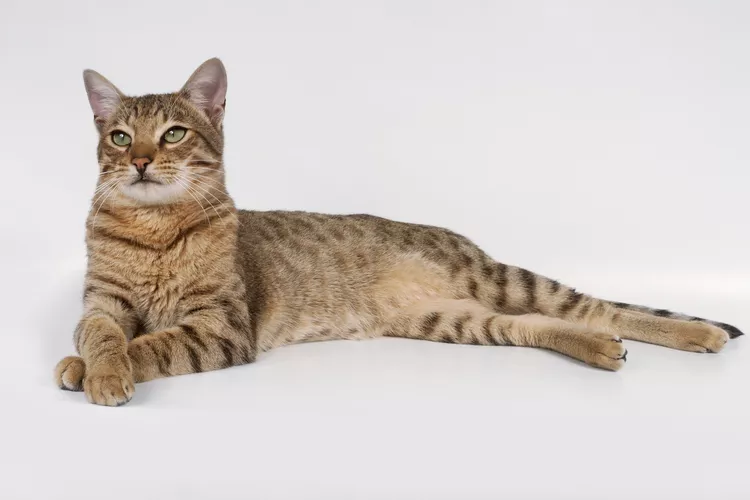What Happens When a Cat is Spayed?

Ovariohysterectomy, also known as a "spay", is the surgical removal of a female cat's ovaries and uterus. Young female cats that are not spayed will go into heat, and their chances of becoming pregnant are very high if exposed to intact (unneutered) males. A female can go into heat as early as four months of age. Every cat is affected differently.
The traditional age to spay a cat has been around six months of age, however, research in the past 20 years reveals there may be advantages to spaying before the first heat cycle. While you can spay a cat in heat, the procedure is more complicated. Now we will discuss the benefits of spaying whether it happens early or later in a cat's life, the spaying process, what to expect after the procedure, and some concerns owners may have afterward.
What Are the Benefits?
Spaying is an important part of cat ownership and to a female cat's overall health. The benefits of spaying far outweigh the risks. Benefits include the prevention of mammary cancer (when spayed early), reducing the number of unwanted kittens, preventing noisy and sometimes irritating heat cycles, and possibly urine marking in the house.
The Spay Process
Although spaying is considered to be major surgery, it is one of the most common procedures performed. Before spaying, your veterinarian will perform a head-to-paw exam, and may suggest bloodwork to ensure all vital organs are in good working order. Spays are performed under general anesthesia. To prepare for anesthesia, a sedative and pain medication will be given. Once drowsy, an injection will be given to induce a deeper sleep. During this time, she is not aware of what is happening and feels no pain. Your cat will then be intubated, meaning a tube placed in her trachea is connected to a machine that helps her breathe. Most veterinarians will also place a catheter in the vein to administer fluids.
Your cat will then be connected to a machine that monitors her heart rate, respiratory rate, oxygen levels, and temperature. She will be given heat support to help maintain body temperature, and the surgical area is clipped and cleaned. An incision is made, just below where the belly button in a human would be. The incision extended down the abdomen, but the length depends on different variables. The ovaries and uterus are removed, and the cervix is tied off. Though it is standard to remove the ovaries and uterus, some veterinarians may leave the uterus intact. Remember, it is the ovaries that are responsible for the heat cycles, possible mammary tumor development, and behavior problems.
Once the vet confirms there is no bleeding, the incision will be closed. Sutures are placed to close the abdominal cavity and then either skin sutures, skin staples, or skin glue are used to close the top skin. When the procedure is finished, the tube helping your cat breathe will be removed. She will be closely monitored by the veterinary team until sent home. If your cat has sutures or staples placed, you will return to have them removed, typically within 10 to 14 days after the procedure.
What to Expect After the Spay
Some veterinarians choose to keep a newly spayed cat overnight, to minimize their movement. If the spay is done in the morning, the cat may be ready to go home the same day. In either case, your cat may be a little groggy the first night, and may not be interested in eating. This is a normal reaction. They should be more alert the next day. Their appetite should also return to normal within a day or two.
Some cats experience some soreness the first few days after the procedure, so pain medication is typically sent home. It is not unusual for owners to see discharge coming from the incision site. When this is noted, it is important to have this assessed by your veterinarian. Some cats may require additional treatments like antibiotics. An Elizabethan collar may be sent home, to keep them from licking which may cause irritation, infection, and sometimes opening of the incision site.
Owner Concerns After the Spay
Is My Cat Going to Gain Weight?
Estrogens are a natural appetite suppressant. When a cat is spayed and estrogens are removed, there may be an increase in appetite. Also, spaying has been known to slow down a cat's metabolism. Your veterinarian will help to determine whether a change in diet and exercise level is necessary.
Can My Spayed Cat Still Be in Heat?
Without ovaries, a cat is unable to go into heat. However, ovarian tissue sometimes extends down the ovarian ligament. This, unfortunately, is not visible to the naked eye. When this occurs, ovarian tissue can be left behind, resulting in a cat showing signs of heat. The cat is unable to become pregnant since the uterus has been removed, but it is still important for the veterinarian to determine if an ovarian remnant is present to prevent other issues from occurring. Diagnosis can be done through blood testing and exploratory surgery will likely be needed to remove the ovarian remnant tissue.